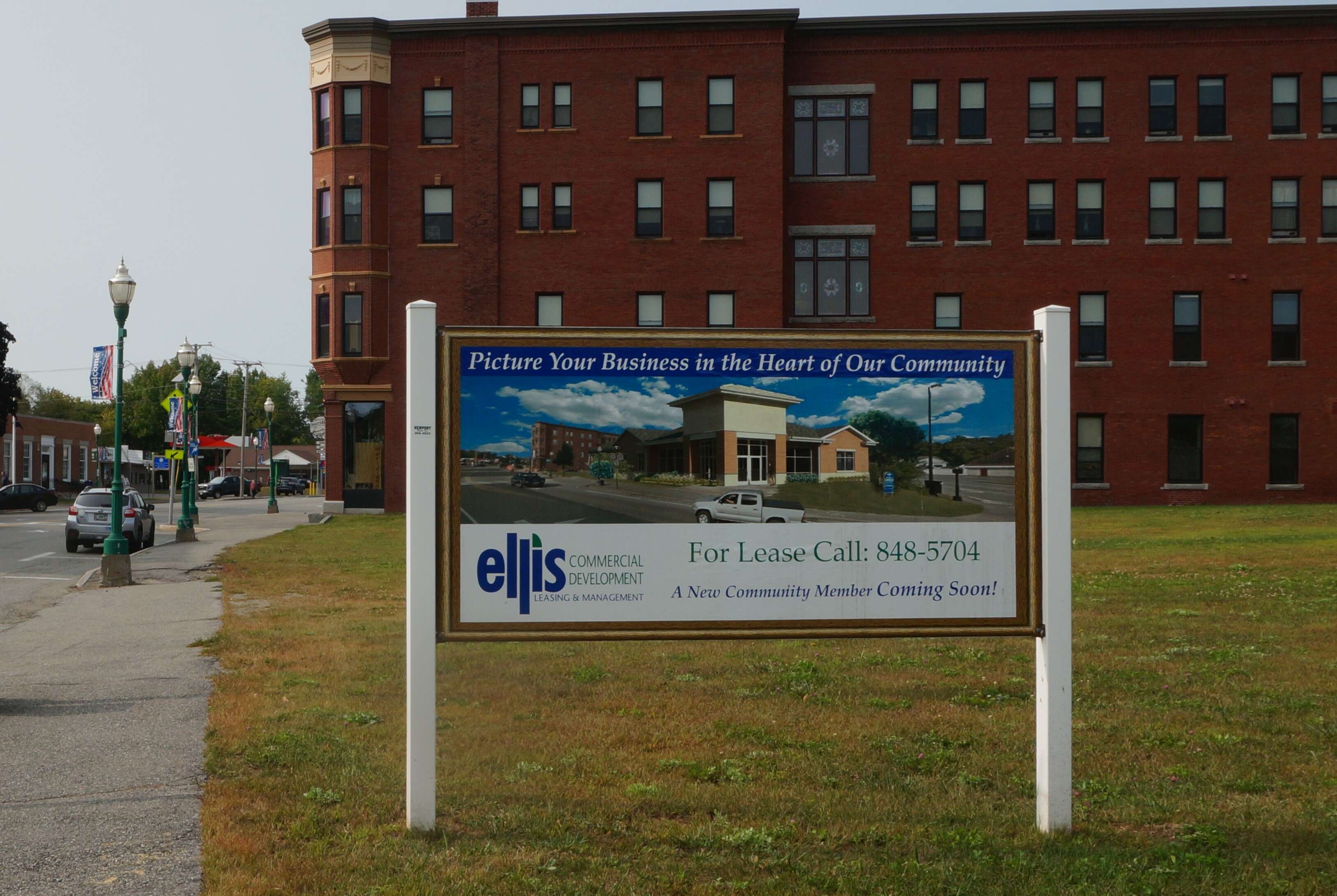
Small-scale historical development can have big impact on Maine towns
No one in Maine in recent years has had to argue that historic redevelopment can make a difference in a city's economy — Waterville, Lewiston and Biddeford are all examples of how large-scale projects can be transforming.
But there's still a battle when it comes to convincing people that small-scale redevelopment can have a significant impact on a town or region, development officials said.
"Our biggest problem is most people think of historic preservation in terms of something being made into a museum, or that type of thing, rather than a community economic development strategy that can provide tax revenue, jobs and reenergize a downtown," said Greg Paxton, executive director of Maine Preservation.
Maine Preservation, in partnership with GrowSmart Maine, CEI, Greater Portland Landmarks and the Maine Real Estate and Development Association, last week released an analysis of the economic benefits of the state's historic preservation tax incentive program. The study shows that in the past four years, projects taking advantage of the program added $166 million to local property tax rolls, including $17 million in new property tax payments, as well as 700 jobs.
The tax credits are only part of the story, Paxton said. Historic redevelopment, even small community-based projects, have economic ripple effects even without the credits, which are an incentive to developers but aren't available to nonprofits.
"We see historic preservation in our rural towns as a unique opportunity to spur economic growth," said Laura Cyr, executive director of the Kennebec Valley Council of Governments. The organization provides regional planning and economic support for towns and cities in central Maine.
Despite the economic benefits, historic preservation is often seen at odds with economic development, she said.
While it's necessary to be approved for the National Register of Historic Places to get federal and state historic preservation tax credits, Cyr said that even redevelopment of a building that carries local historic significance but isn't on the register can have an impact on a community.
"The historic locations that are important in these developments are often buildings that are locally significant to the history of a particular town," she said.
Four central Maine projects are good examples of how small-scale historic development can help transform a community.

Fairfield: The Gerald
The former Gerald Hotel, built in 1901, underwent a $6.5 million renovation six years ago, with 28 new apartments for those 55 and older on its upper floors. Ground-floor retail space includes Meridians, a store that sells cheese, wine and beer. The ripple effects are being felt in Fairfield's small downtown.
"It's a great example of how one project can have a really outsized impact," said Garvan Donegan, director of planning and economic development for the Central Maine Growth Council.
The former hotel, which had a variety of other uses, was vacant from 2006 until the Kennebec Community Action Program bought it in 2012.
Since the redevelopment, which was completed in 2014, several businesses have opened in previously vacant storefronts nearby. One of them, Meridians Kitchen & Bar, opened in June 2019 across the street from The Gerald, owned by David Gulak and Josh Sullivan, who also own the store in the former hotel.
Donegan said the scale of Main Street — just a few blocks long — means a redevelopment like The Gerald draws attention. The apartments mean more people downtown, which means more activity. The town of 6,700 is along the Kennebec River, between Waterville and Skowhegan.
Another benefit is that the apartments bring more residents downtown, which means more consumers and spurs more commercial development.
On a bigger scale, preservation also allows people to re-envision what a downtown can be, Donegan said. A large vacant lot next to The Gerald is poised for development, offered by Ellis Commercial Development.
He said the historic preservation aspects are also significant. When people see the restoration of features that were original to the hotel "it gets people excited again" about the history of their downtown and community, and preserving it.
The renovation was recognized with an Honor Award by Maine Preservation in 2014.
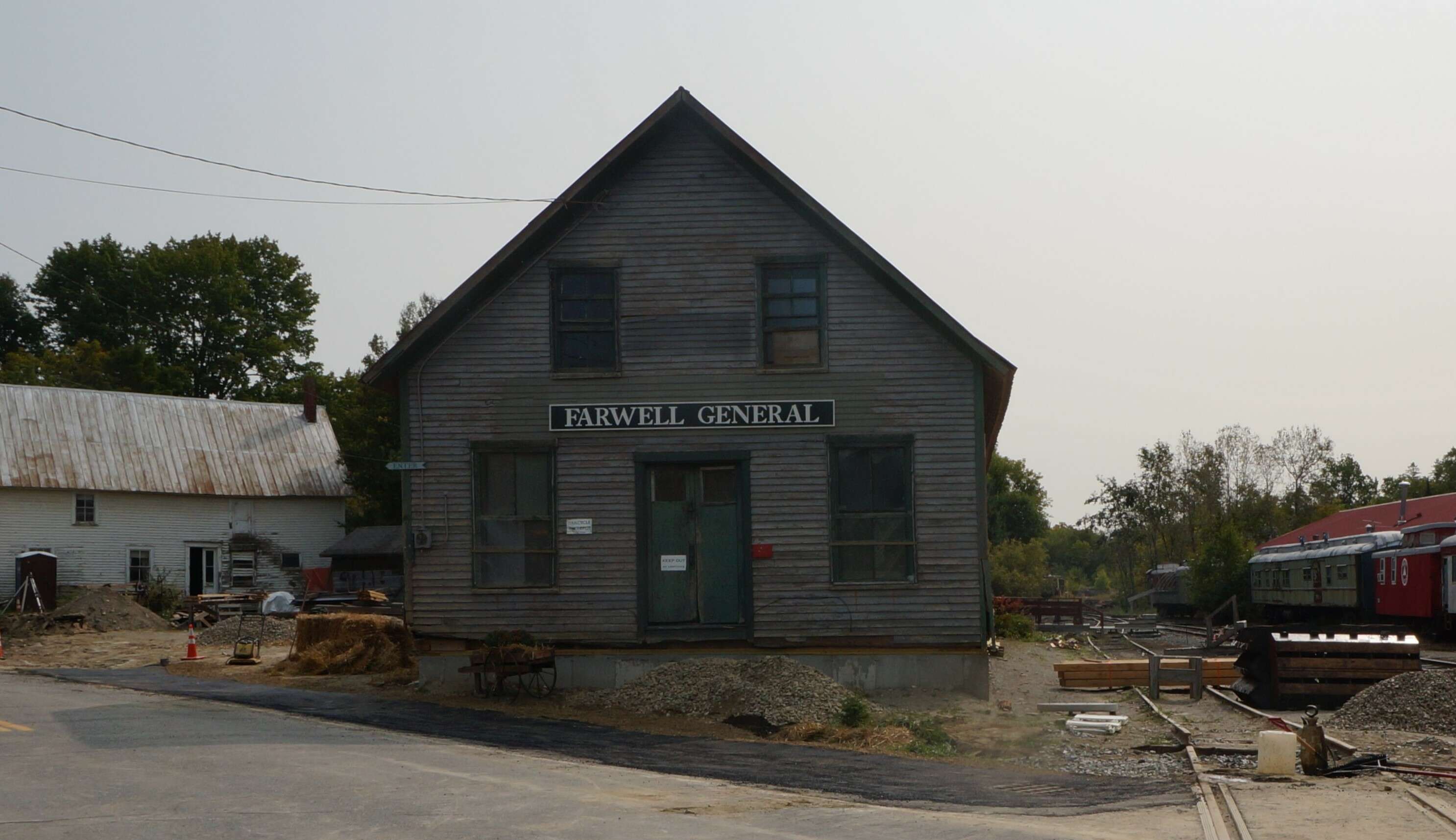
Thorndike: The general store, museum and Grange hall
The town of Thorndike, in central Waldo County, is a farming community of 800 southeast of Unity, but was once a bustling railroad hub.
A nonprofit group, Timelines Inc., is renovating four-buildings in the town center — the former Farwell's General Store, a grain mill that still has original hand-made machinery, a railroad depot and the former Grange Hall.
"There aren't any more buildings like this, and they just have so much history in them," said Diana Prizio, who heads up the Thorndike Mill and Meeting Place project
Since the group is a nonprofit, it can't take advantage of federal or state historic preservation tax credits, but is making do with volunteer help and grants.
Aside from the history, the project is aimed at bringing vitality back into the heart of the village. It got a big boost earlier this year with an $80,000 Northern Borders grant, administered through Maine Preservation. The money is paying for foundation, drainage, sills, joists, subflooring and chimney work, much of which is being done by volunteers.
Plans are for a store, which has to be open to the public by next July, as required by the grant. The museum was already operating before the pandemic, and further plans are for a community center and, eventually, a library in the Grange hall next door, which is the only one of the buildings not on the National Register of Historic Places.
The project has been underway for five years and has resulted in some action. The train line — the old Belfast to Burnham spur of the Belfast to Moosehead Lake train run — was running trains from Unity to Thorndike, with the museum as a destination before the pandemic. The train also was used as a shuttle from Thorndike to the Common Ground Country Fair in Unity.
Prompted by the mill project, a building across the street is being developed into apartments with first-floor retail.
Prizio, who has owned Garden Variety, a store next door to the site, for 30 years, said the community has been supportive, including supplying donations for the museum. What they need now, she said, is volunteer help, particularly since the Waldo County Re-Entry Program, which provided workers, is on hold because of the pandemic.
The project is an example of the coalitions that can form to guide preservation-minded economic development projects, Cyr, of KVCOG, said. "This project, an ambitious meeting place, online marketplace, and cultural history museum is working to return a sense of economic vitality to Thorndike.
"In this rural town, dependent on railroads, when the general store closed, the streets emptied," she said. "This is a pattern we’ve seen in so many of our small towns that used to be nearly self-sufficient and are now seeing an exodus of commerce. Redeveloping a location like the general store brings that commerce back in a meaningful way by offering more than opportunities in the marketplace."
She said the store, "is developing a renewed sense of place and identity for the town and the people of Thorndike. Reclaiming that sense of identity is what keeps people in town and draws new visitors and residents."

Freedom: Freedom Mill at Freedom Falls and beyond
The 1834 grist mill in the heart of Freedom, a Waldo County town of 700, was redeveloped in 2012 and 2013 by Tony Grassi, who bought it in 2010. The project used historic preservation tax credits and the mill now houses Erin French's Lost Kitchen restaurant, her wine store and The Mill School. It also has working hydropower.
Paxton, of Maine Preservation, said taking on the mill renovation project was a "heroic act."
"It wasn't in great condition," he said. That's an understatement — most of the additions to the to the 1824 mill had to be torn down, with new ones built according to historic preservation requirements. Timbers were replaced, the stone foundation repaired and new hydro equipment installed.
The support of the town for the project was especially important to Grassi and his wife, Sally, he told Preservation Magazine in 2014. The town of 700 had grown so accustomed to the crumbling mill as part of the scenery and little more that it wasn't even on the zoning maps.
Cyr, of KVCOG, said the mill project is an example of a small town adapting to changing circumstances.
"The impact of an active mill on this small town was one of the top priorities for consideration as this project moved forward," she said. "Preserving an iconic rural Maine structure was important, but so to was preserving important elements of the history and culture of the town while the economic base was being revitalized.
"The result of this project is a beautifully restored, environmentally compatible development that not only offers five rental spaces of various sizes and configurations, but also produces its own power," Cyr said. She called it a "stellar example of the symbiotic relationships that can be had when development, preservation, and environmental stewardship come together."
Now the mill, with its nationally famous restaurant and eye-catching renovation, has put the town, about halfway between Waterville and Belfast, on the map.
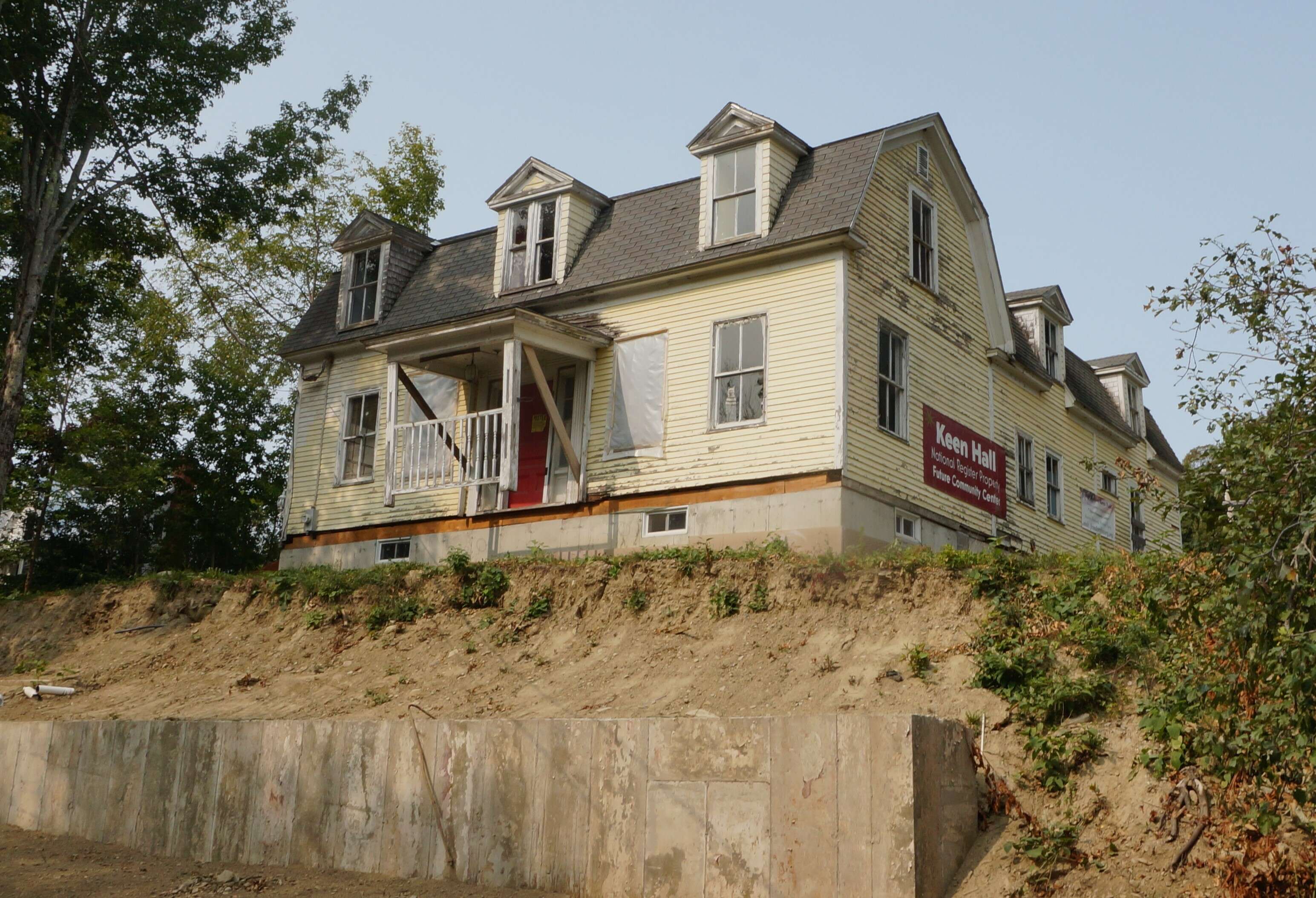
Freedom II: Keen Hall, 'a community enterprise'
The Freedom Mill project also spurred more vision for the town, Paxton said, prompting the Keen Community Center project, which will transform a derelict historic house into a community gathering place.
"It's really a community enterprise," Paxton said.
Spearheaded by the Freedom Community Historical Society, many of those involved were also part of the Freedom Mill development. Chris Glass, who was also architect for the mill project, drew up plans for Keen Hall for free, Myrick Cross, of the historical society, told Village Soup last year. Landscape architect Stephen Mohr, of Mohr & Seredin, and Albert Frick, of Frick Engineering, are also involved, as is Grassi.
The house, built in 1854, is the only remaining building from Freedom Academy. It made Maine Preservation's "Most Endangered" list in 2015, and the National Register of Historic Places in 2017.
Work on Keen Hall began a year ago. The house, which is on a rise above Route 137, has a new retaining wall and septic system. Foundation and excavation work is being done by local contractors excavator Brandon Suitor and concrete contractor Mark Raven.
The historical society bought the house from the town for $4,500, the amount owed in taxes, and so far the group has been awarded a variety grants, including two recent major ones.
Earlier this month, the Maine Community Foundation Belvedere Grant Fund awarded the project $16,796 to finish flooring construction and refinishing, garage wall construction, clapboard replacement and painting. In June, it was awarded $15,000 from The Davis Family Foundation that will also pay for work on the floors, underpin the garage end of the building and close up walls of the former garage, which will become the gathering and exhibit space. The work is expected to begin this fall.
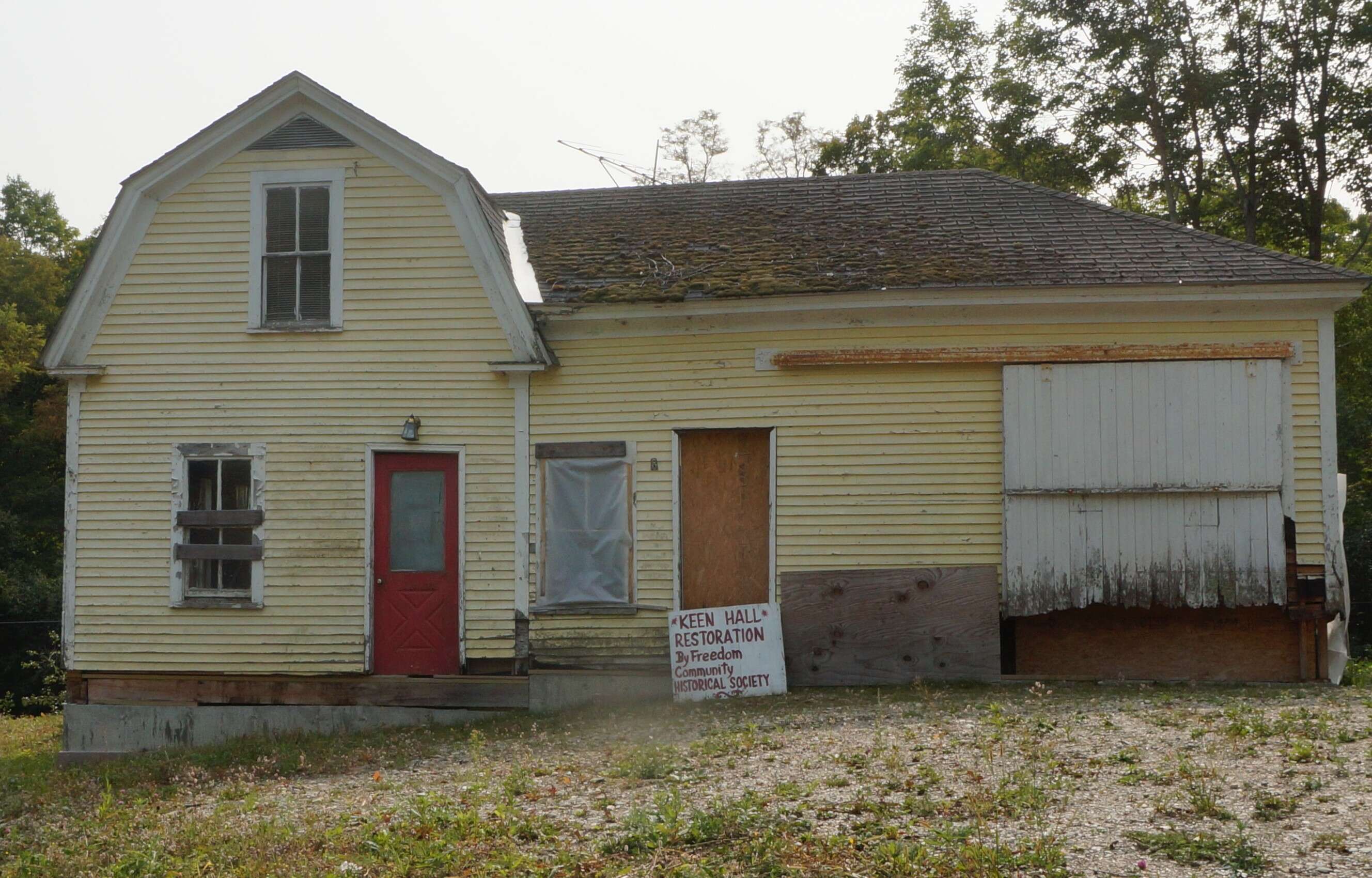
Benefits for all
Paxton, too, said the small projects that often get overlooked have an impact that is on a bigger scale than larger projects in bigger places. And those projects, as in Freedom and Thorndike, are hiring local workers to do the renovations.
"That's a benefit that's very real," he said. "It can be huge in some places."
Cyr said that what's happening in Freedom and Thorndike can happen anywhere in Maine.
"Nearly every one of our communities has historic resources that can be leveraged to spur the economic growth that is crucial for developing a robust Maine economy," she said. "Adaptive reuse of historic buildings and clusters in one town or region does not preclude another region or town from developing their own historical identity."
"Town center revitalization, job creation, small business incubation, housing, education on the cultural history, tourism and positive press like this are all benefits of this kind of development," she said of the Thorndike project.
In general, such projects, "can lead to a nearly limitless set of economic opportunities for our region and for Maine as a whole."






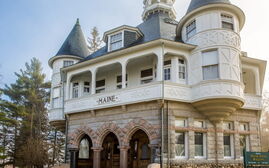







0 Comments